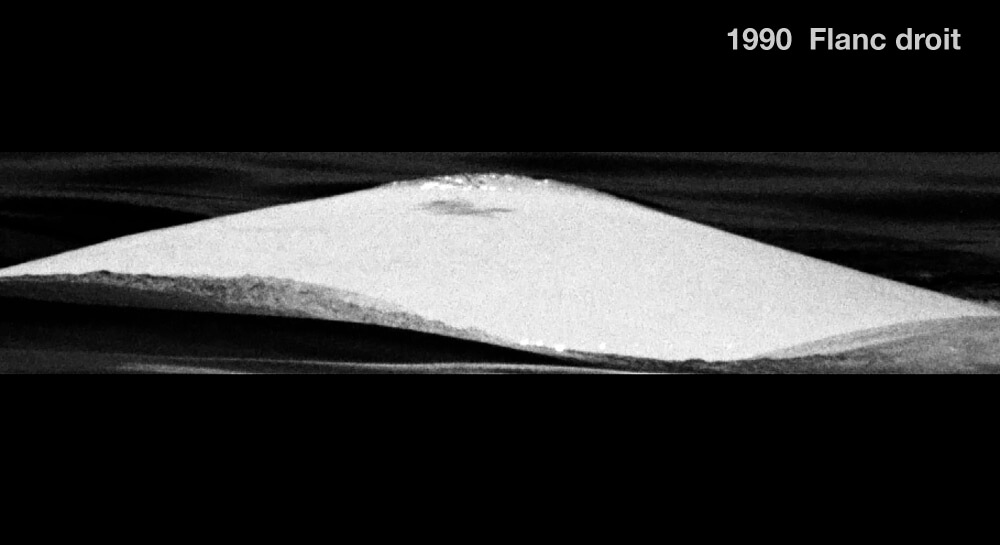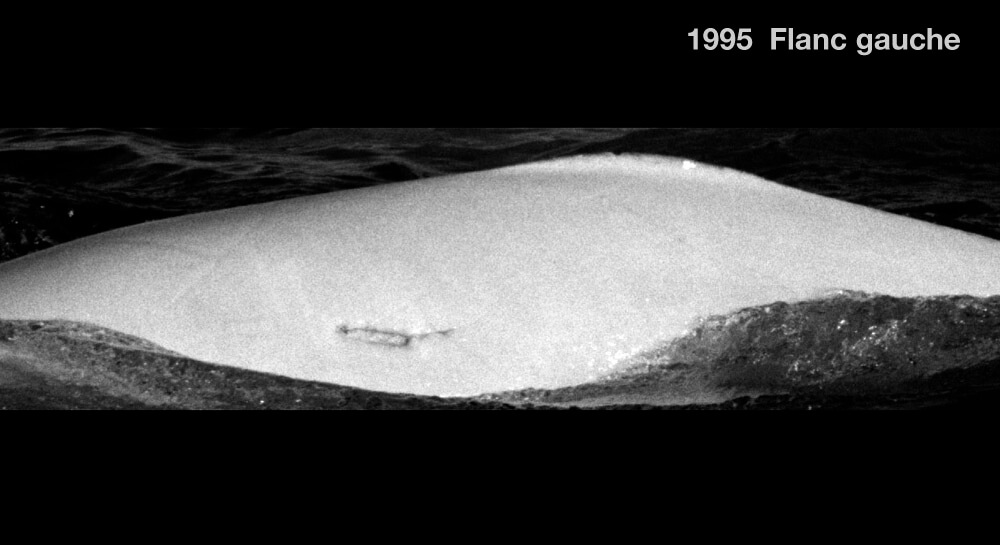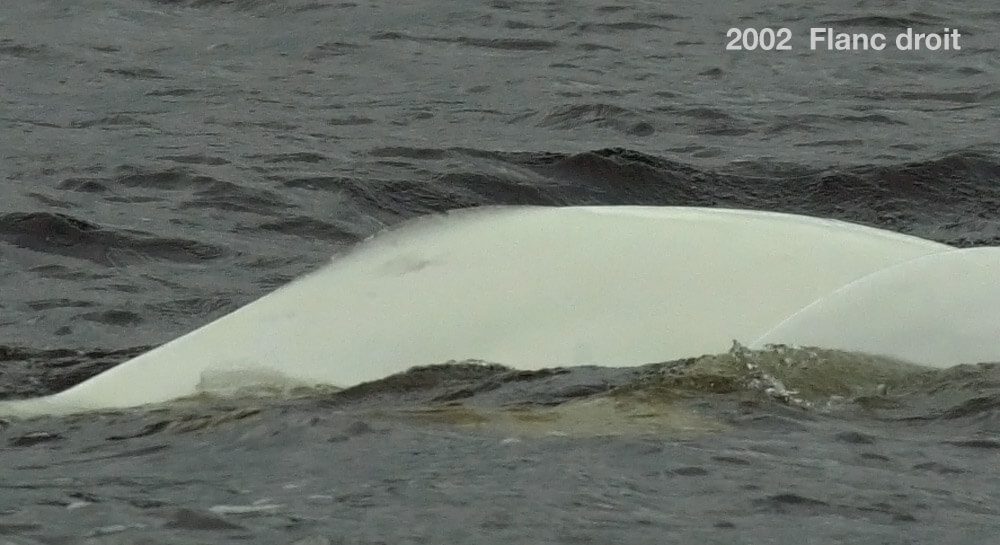Nip
Beluga


Adopted by Fédération des caisses populaires Desjardins de Montréal et de l'Ouest-du-Québec
-
ID number
DL0042
-
Sex
Male
-
Year of birth
Around 1979
-
Known Since
1987
Distinctive traits
Nip is easily identifiable on both flanks. On the left flank, he bears a deep, linear scar. On the right flank, a gray spot just below the crest helps us recognize him.
Life history
We first met Nip in 1987. He wasn’t quite white. He was noted as being completely white from 1993, so he would have been born around 1979.
His large size, habits and social affiliations clearly indicate that Nip is a male. He is part of one of two networks of males that frequent the Saguenay fjord and its mouth.
At first, he was slightly gray. Over the years, he has become white, an adult. An animal’s color is a clue to its age, or at least to the age class to which it belongs. Belugas change color in the first few years of life. It is “café au lait” at birth, turns blue-gray after a year, and then fades from year to year until adulthood. The final color change, from gray to white, occurs between the ages of 12 and 16.
Observations history in the Estuary
Years in which the animal was not observed Years in which the animal was observed
Latest news
The wind is blowing across the Saguenay Fjord, and the wave crest is remarkably white. We head for Sainte-Marguerite Bay. The composition of Nip’s groups is diverse : as we approach the bay, we see groups of belugas, probably adult males. Further out, groups of young grays, including Slash, and a few newborns. Then, in the middle of the bay, belugas ply the area, obviously juveniles accompanied by females.
Nip’s last sighting was over 14 years ago. What happened to him? Is he dead? Has he remained invisible to researchers all this time? Impossible to know at the moment. One thing is certain : his story remains a valuable source of information for our knowledge of this fragile population.
Sponsor
La Fédération des caisses populaires Desjardins de Montréal et de l’Ouest-du-Québec adopted Nip (1988).





